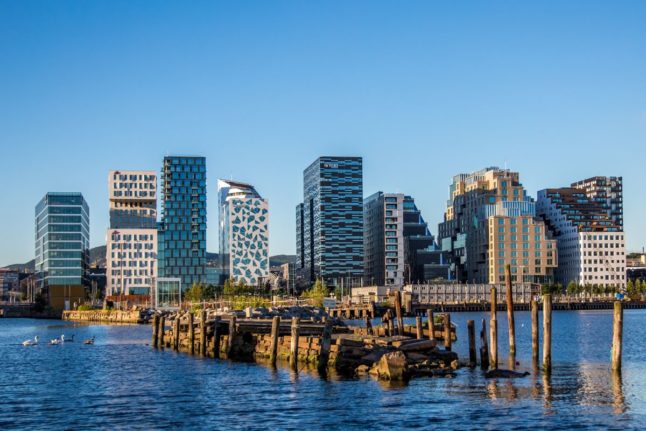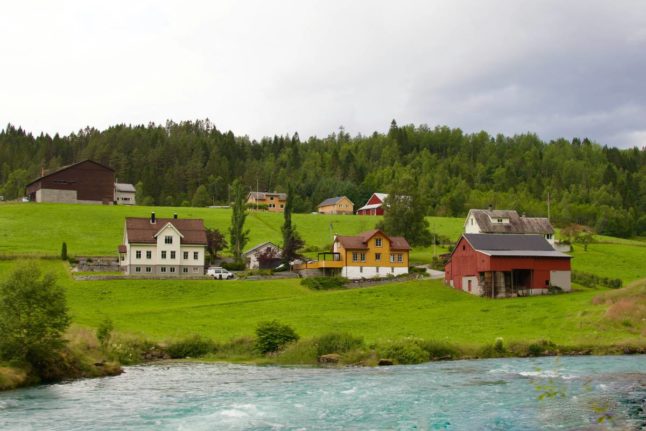The pilot scheme, a collaboration between the City of Oslo and public and private sector actors, managed to cut the waiting time for nine skilled worker permits down to three days using a harmonised digital portal.
Typically, it takes non-EEA hires 37 weeks to start their jobs, according to figures from Oslo Business Region.
“The city, Oslo, took a problem that isn’t actually ours because immigration is not a municipal responsibility and found the solution. As a city, we’ve done something quite untypical of a public service,” Rina Mariann Hansen, Vice Mayor for Business Development and Public Ownership, said at the event.
The scheme, called Kompetansespor (the competence track), was introduced to ensure the city could attract global talent and address a skills shortage.
How did the scheme work?
Nine skilled worker permit applicants from non-entry visa countries outside the EEA were chosen to participate.
The candidates uploaded their employment contracts to the digital wallet used for the pilot. They received their residence permit, tax card and permanent Norwegian identification number from a police station within three days of uploading their documents.
Thea Ullhaug Pope, senior content developer for the City of Oslo, said that after candidates’ documents were successfully uploaded, it took the authorities minutes to grant residence and issue an identity number ahead of the police appointment.
Only candidates applying for jobs at the University of Oslo were selected for the pilot project.
What was it like for applicants?
Mark Ravinet, associate professor of evolutionary biology at the University of Oslo, was one of the candidates selected to take part in the scheme.
He previously moved to Norway under the EEA regulations as a British national in 2015 before leaving Norway in 2019.
Due to the UK leaving the EU, he had to apply under the rules for non-EEA workers when he decided to return to Norway.
He told The Local that the process was simpler than the EEA regulations for moving to Norway for work. Those using the fast track were still subject to the requirements for non-EEA skilled workers. The requirements for those from the EEA are less stringent.
“It was even more straightforward. So, when I moved in 2015 (under the EEA rules), it was already relatively easy. I had to show up at the police station and then waited a month for an identification number. With this scheme, the whole process was over in minutes,” he told The Local.
“I had done a lot of research on the regular non-EEA rules and what I would have had to have done if I hadn’t been on the scheme. I was looking at four or five months of waiting, so it was very straightforward,” he added.
Who is eligible for the scheme?
The City of Oslo is currently working on the next step of the scheme, which will involve working with small businesses. When the project’s next stage is finalised, the candidates will be preselected again.
It will not be possible to apply to be on the fast-track scheme work permits. As the work on the next steps continues, the conditions for eligible candidates will become more apparent.
Companies will need to meet the criteria of having new staff joining around November.
“If a company is hiring, they can ask to be a part of it – but it’s not open for applications as we don’t have the resources and need to figure out what we will test. Since we don’t know the criteria we will test, we don’t want to get people’s hopes up, and then we are not ready to help them,” Pope told The Local after the event.
Could the scheme be adopted nationally, and could other residence permits also be fast-tracked?
The authorities involved in the scheme, which include the City of Oslo, Oslo Municipality, the Norwegian Directorate of Immigration (UDI), the police and the Norwegian Tax Administration, as well as partners from the private sector that helped develop the digital wallet, want to continue the work.
Pope told The Local that one of the long-term ambitions of the project is to try and get the scheme adopted by other regions and then nationally.
“It’s not an Oslo thing that needs to be fixed. We know that it’s something that needs to change across the country. But we can’t wait for it to happen on a national level. We are going to try to be in charge and push it and then hopefully add other cities afterwards,” Pope said.
She added that informal talks over the project being rolled-out elsewhere had taken place with politicians and other local authorities and that there had been interest but that nothing concrete had happened regarding an expansion.
Moving forward, the scheme will look to include candidates from countries which need an entry visa to enter Norway. Furthermore, it will look at opening the fast track for those applying for a family immigration permit to move to Norway with a skilled worker.
“We see that it is important for the city that the skilled worker and their family are all integrated at the same time. We see that for the user, it is very important that they can stay together and travel to Norway. So that is something we really want to happen. The pilot is not finished until we can add the families or people from entry visa countries. We are going to test what is needed to add families and what is needed to add entry visa countries,” Pope said.



 Please whitelist us to continue reading.
Please whitelist us to continue reading.
Member comments